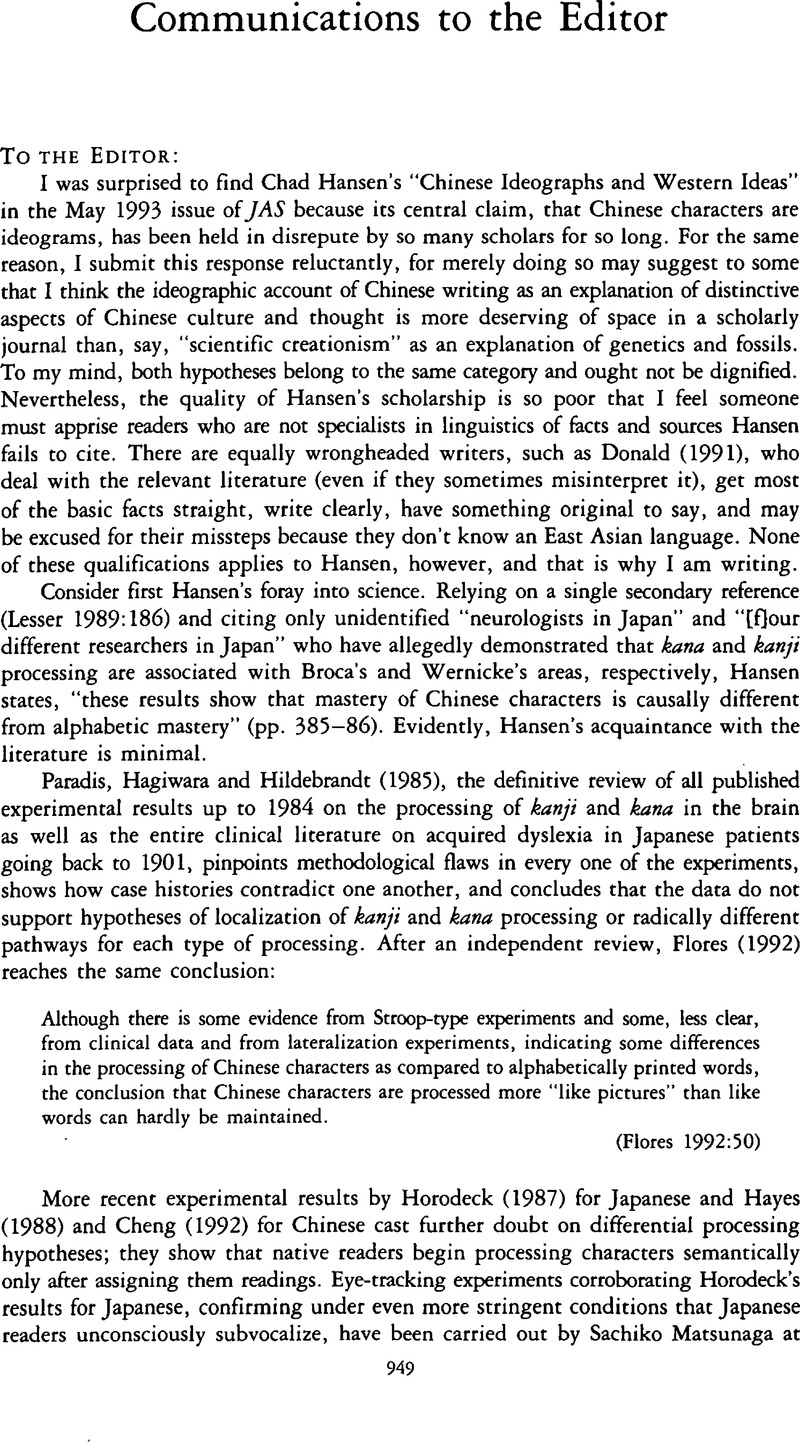Crossref Citations
This article has been cited by the following publications. This list is generated based on data provided by Crossref.
Mair, Victor H.
1994.
Buddhism and the Rise of the Written Vernacular in East Asia: The Making of National Languages.
The Journal of Asian Studies,
Vol. 53,
Issue. 3,
p.
707.
EVERSON, MICHAEL E.
1998.
Word Recognition among Learners of Chinese as a Foreign Language: Investigating the Relationship between Naming and Knowing.
The Modern Language Journal,
Vol. 82,
Issue. 2,
p.
194.
Lurie, David B.
2006.
Language, writing, and disciplinarity in the Critique of the “Ideographic Myth”: Some proleptical remarks.
Language & Communication,
Vol. 26,
Issue. 3-4,
p.
250.
McDonald, Edward
2009.
Getting over the Walls of Discourse: “Character Fetishization” in Chinese Studies.
The Journal of Asian Studies,
Vol. 68,
Issue. 4,
p.
1189.
BARRETO, Cristiano Mahaut de Barros
2017.
CLAVIS SINICA: BREVE HISTÓRIA DA LONGA BATALHA PELO SISTEMA DE ESCRITA CHINESA NO OCIDENTE ENTRE OS SÉCULOS XVI E XIX.
Alfa : Revista de Linguística (São José do Rio Preto),
Vol. 61,
Issue. 1,
p.
201.
Shaughnessy (夏含夷), Edward L.
2018.
An Overview of Western Sinologists’ Studies of Chinese Paleography (西方漢學家中國古文字研究概要).
Bamboo and Silk,
Vol. 1,
Issue. 1,
p.
275.





